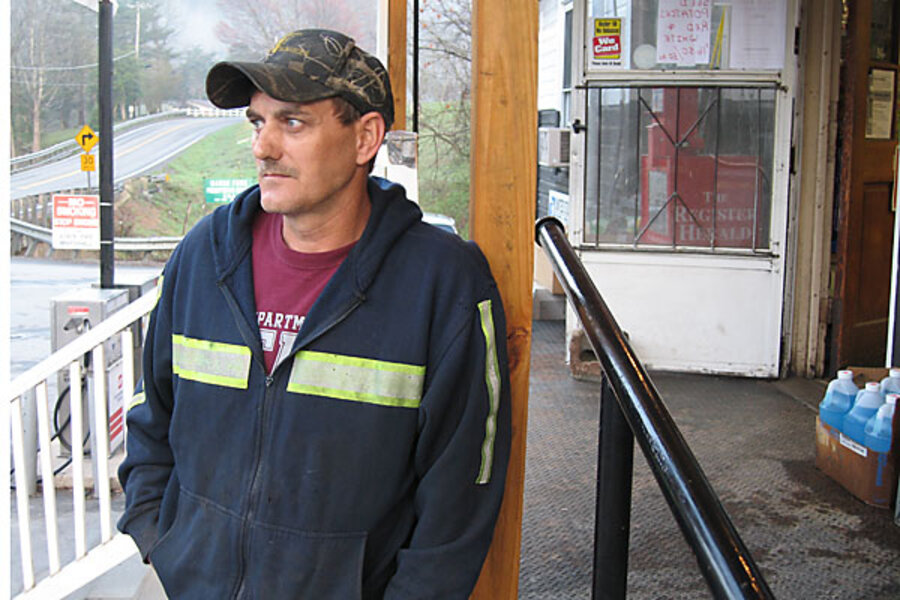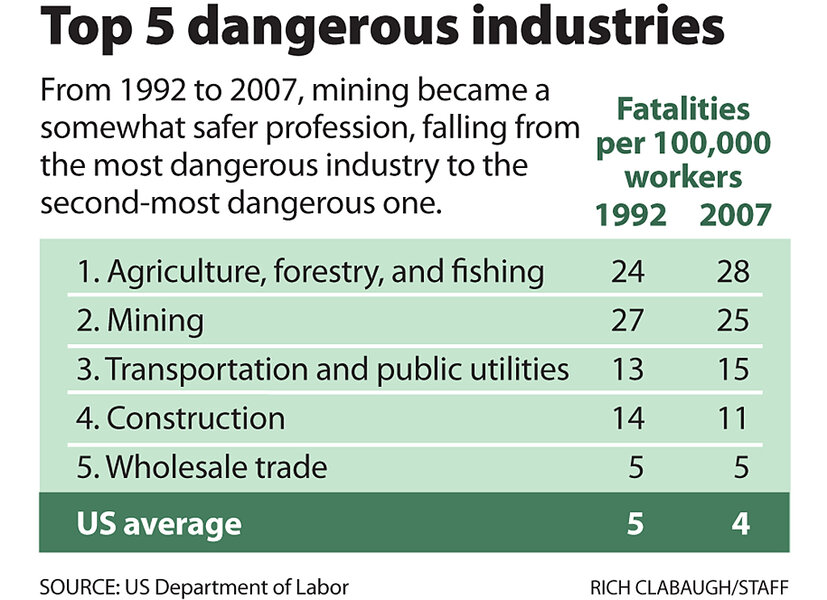West Virginia mine explosion: Mining jobs were getting safer, until now
Loading...
The fatal explosion at the Upper Big Branch mine in West Virginia represents a huge blow not only to the mine's owner, Massey Energy Co., but also the industry itself.
Two decades ago, coal mining was the most dangerous industry in the United States. By 2007, it had managed to move to No. 2, behind agriculture, forestry, and fishing, according to the Department of Labor. (Click on the chart at left to review the most dangerous professions.) Last year, the number of mining fatalities fell to a record low of 34, with coal mining accounting for 18 of those.
When it comes to specfic jobs, a coal miner doesn't even rate among the 10 most dangerous jobs, Labor Department data show. Fishermen and loggers have fatality rates that are four to five times that of coal miners. Even pilots and flight engineers face much higher risks than coal miners do.
But Monday's explosion at the Upper Big Branch mine in south-central West Virginia tarnishes the industry's record. It caused 25 fatalities, more than all the coal-mining fatalities last year, making it the worst mining disaster since 1984. Four other miners are still missing and the subject of an intense rescue effort.
The accident is also a blow for West Virginia, which has seen more than 150 coal-mine fatalities since 1996. It has the highest total of any state, representing nearly a third of the total coal-mining fatalities for the US.
Authorities blamed Monday's explosion on a buildup of volatile methane gas in the underground Massey mine. Typically, such disasters hit small, shoestring coal companies. That it occurred at Massey, one of the nation's largest coal companies and able to afford the most sophisticated safety equipment and procedures, is sure to prompt investigations into its safety practices.
Federal authorities fined Massey more than $382,000 for repeated serious violations involving ventilation at Upper Big Branch mine in the past year, the Associated Press reported.






